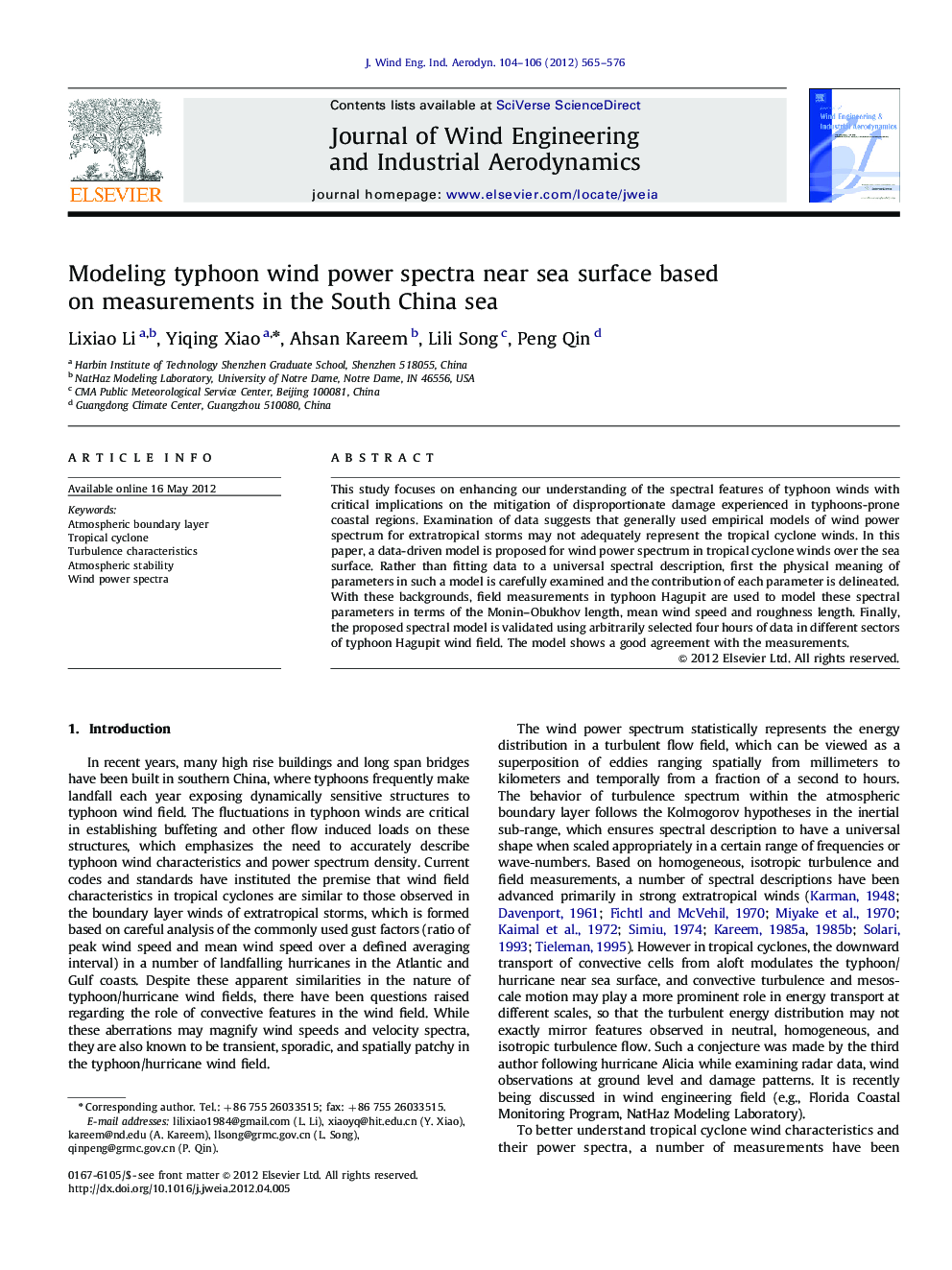| Article ID | Journal | Published Year | Pages | File Type |
|---|---|---|---|---|
| 293681 | Journal of Wind Engineering and Industrial Aerodynamics | 2012 | 12 Pages |
This study focuses on enhancing our understanding of the spectral features of typhoon winds with critical implications on the mitigation of disproportionate damage experienced in typhoons-prone coastal regions. Examination of data suggests that generally used empirical models of wind power spectrum for extratropical storms may not adequately represent the tropical cyclone winds. In this paper, a data-driven model is proposed for wind power spectrum in tropical cyclone winds over the sea surface. Rather than fitting data to a universal spectral description, first the physical meaning of parameters in such a model is carefully examined and the contribution of each parameter is delineated. With these backgrounds, field measurements in typhoon Hagupit are used to model these spectral parameters in terms of the Monin–Obukhov length, mean wind speed and roughness length. Finally, the proposed spectral model is validated using arbitrarily selected four hours of data in different sectors of typhoon Hagupit wind field. The model shows a good agreement with the measurements.
► An analytical model is proposed to determine typhoon wind spectra over sea surface. ► Empirical models of spectral parameters were presented. ► Wind spectral characteristics were analyzed for typhoon Hagupit winds. ► Non-classical, elevator-like energy cascade was noted in eye wall regions of typhoon Hagupit.
